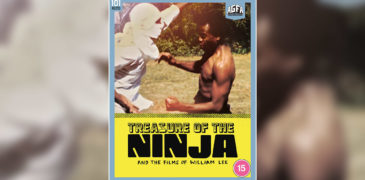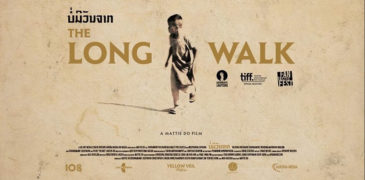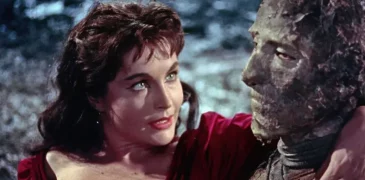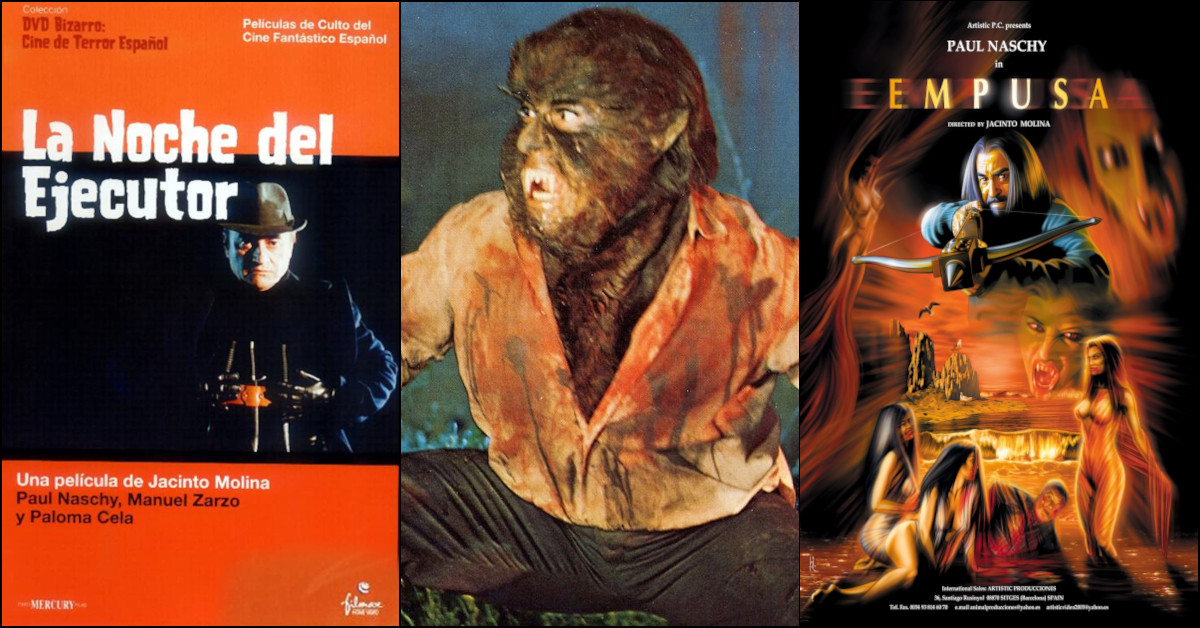
As a fan of European horror, I own nearly 30 films starring Spanish horror icon Paul Naschy. They cover his career from his early, lavish monster movies of the 1960s and 1970s to the cheap, direct-to-video exploitation films of the 2000s. Because his movies often reflected the changes he went through in life, it is impossible to watch the films without sort of awareness of who he was as a person and as an artist.
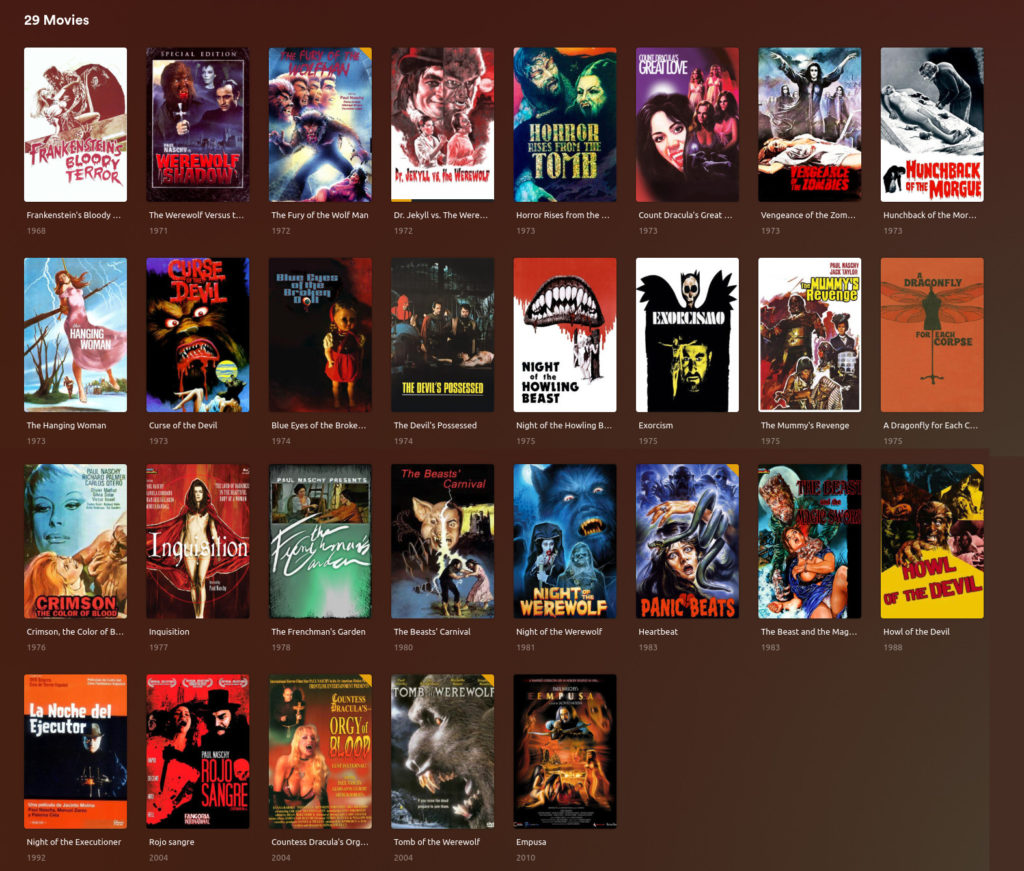
Over a career of 50 years, Paul Naschy acted in a hundred films, writing and directing many of them. He took advantage of the relaxed censorship standards of the post-Franco Era to up the sex and violence of his movies. These popular films provided a link between older, traditional horror movies with supernatural monsters, and grim, modern horrors bred by society’s dysfunction.
Paul Naschy was a lifelong fan of the Universal horror films of the 1930s, especially Frankenstein meetsThe Wolfman (1943), starring Lon Chaney. He brought his own werewolf to life in his Hombre Lobo movies. Polish Count Waldemar Daninsky, his character, was featured in twelve films. In the loosely joined films, Daninsky tried to find a cure for his lycanthropy while facing off against a variety of monsters and Elizabeth Bathory.
Besides the Hombre Lobo movies, Naschy’s other roles included Dracula, a mummy, voodoo priests, lovelorn hunchbacks, necrophilic gravediggers, Dr. Jekyll and Mr. Hyde, medieval sorcerers, and so on. He was able to cast himself in multiple roles, once as twin brothers and Satan in 1973’s Vengeance of the Zombies (Spanish: La rebelión de las muertas/ Rebellion of the Dead Women).
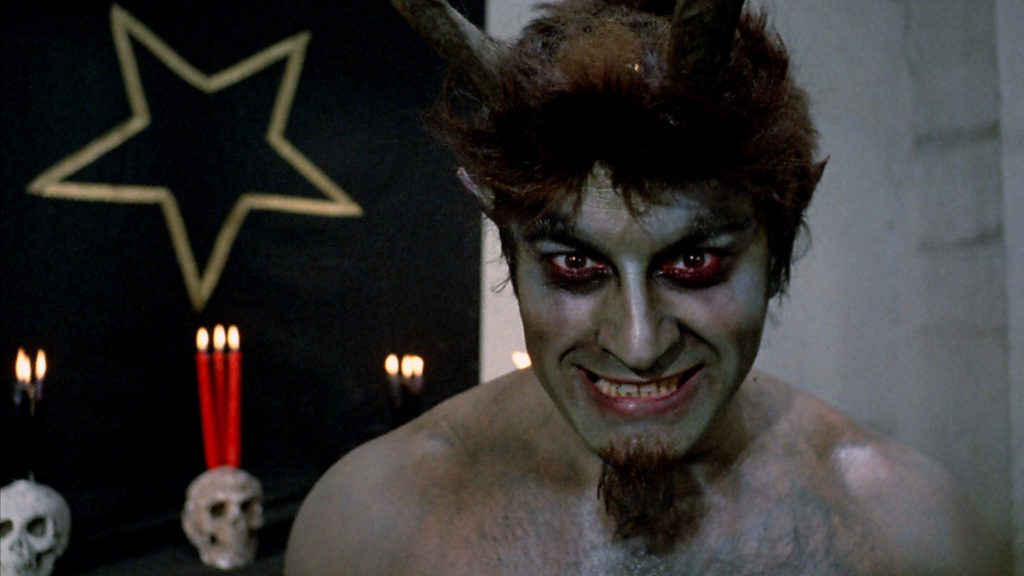
Naschy’s early films in the 1970s were popular, featuring lively scenes of young and urbane men and women coupled with remote, gothic castles and old cemeteries. By the end of the decade, interest in that style of horror was waning and films of that type were no longer earning money. However, his films stopped making money in the mid-1980s. By the mid-1980s, his production company went bankrupt and his partners abandoned him. For the rest of the 1980s, his output was limited to mostly bit parts or cameos in other people’s productions.
The director also suffered personal tragedies that further hampered his career. His father, who he was close to, unexpectedly died around this time. In 1991, Naschy suffered a debilitating heart attack that put him out of action for quite a while. There were so many rumors of his death that he had to contact media outlets personally to prove that he was still alive and active.
Prior to these changes, Nashy’s work, however dark, contained a sense of altruism. Even though, as a werewolf, Waldemar Daninsky would savagely kill anyone who crossed his path. The rest of the time, he devoted himself to ending the curse and fighting whatever ancillary monsters may be present. This theme of trying to protect the world from evil all but disappeared in his post-heart-attack films. Many times, his characters embraced their turning into monsters who were often motivated by the desire for revenge. One example of this type of film is 1993’s La Noche del Ejecutor (The Night of the Executioner)..
The Night of the Executioner was another Naschy triple threat–he functioned as writer, director, and star. Dr. Hugo Arranz (Naschy), his wife, and his daughter are quietly celebrating his 50th birthday at home when a leather-clad thug named Roque (played by Naschy’s son, Sergio Molina) and his gang break in. They cut out Hugo’s tongue and force him to watch the rape and murder of his wife and daughter. Hugo survives the ordeal but is now mute. Choosing not to help the police with their investigation, he embraces vigilante justice, taking matters into his own hands to administer his definition of justice.
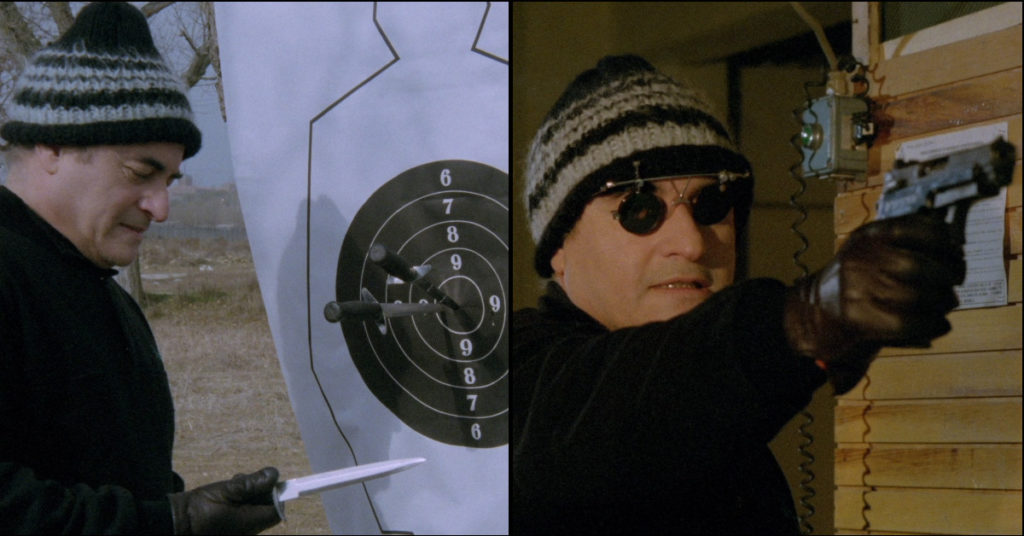
The film is a grim and violent revenge fantasy. According to Troy Howarth’s essay in the Mondo Macabro Blu-ray’s booklet, Naschy’s bitterness over his filmmaking misfortunes and a pair of real-life encounters with violent crime inspired the movie. Naschy, a champion bodybuilder, successfully fought off a trio of muggers. The other incident was much darker: a family friend was attacked and raped. Frustrated by his career setbacks and angered by the violence of contemporary Spain, Naschy’s grievances were poured into this tale of a peaceful, well-respected doctor’s transformation into a vengeful killer.
Night of the Executioner is a hard movie to watch. The attacks are portrayed from the victim’s perspective, forcing the viewer to empathize with their pain and terror. Even though he is the survivor of one of these attacks, Hugo is far from a sympathetic character as he relentlessly pursues his own victims, matching and even surpassing their cruelty. He is a silent, grim hand of vigilante justice, cleaning the streets of Madrid one thug at a time.
This was Naschy’s last film as a writer and director until 2010’s Empusa. In this, his last movie, filmed in 2007 but not released until after his death in 2009, Naschy makes a return ennobled scoundrel of his earlier films who fights the monsters because it is the right thing to do. Abel (Naschy), a retired actor and student of the occult, discovers a body on the beach with strange supernatural marks. Intrigued, he investigates while a bevy of sexy, goth-girl succubi tries to distract him. Equipped with the tools of the trade and a relatively pure heart, he ventures into their lair for a showdown in the shadows.

Empusa has a kinder, nostalgic perspective. It lacks the vitriolic attacks on Spain’s film industry found in his previous movies about retired actors (Howl of the Devil, 1988 and Rojo Sangre, 2004). Instead, it is a sentimental and somewhat comic story about a retired actor in his twilight years coming to peace with himself and his legacy. While not a perfect film, Abel is much more relaxed than Hugo, engaging in witty banter with his costars and tossing out one-liners about buying things on the Internet.
Paul Naschy was one of Spain’s most significant filmmakers and had no qualms about allowing his personal feelings to show in his movies. His mid-to-late-career films provide an intimate glimpse into the difficult passages he went through in the final two decades of the 20th century. In contrast with his Daninsky films, the movies he wrote and directed in the 1980s and 1990s displayed the intense anger and hopelessness he felt after his professional downturns and personal setbacks. At the end of his career, his last film was a balm of reconciliation, allowing Naschy to end his career celebrating the one thing he consistently felt about movies – love.
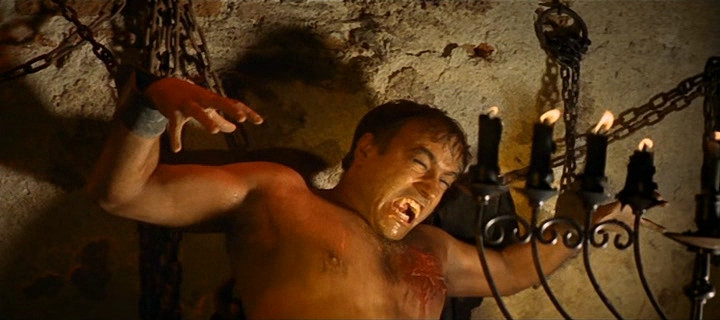
More Reviews
Bingo Hell (2021) Film Review – You Win, You Die!
There aren’t a lot of production studios left that are devoted to horror. The two big ones that come to mind for me are Sam Raimi’s Ghosthouse Pictures and Blumhouse….
UFO Sweden (2022) Film Review – A Smart Sci-Fi Thriller From Sweden [Toronto After Dark Film Festival]
To believe is one thing. To know is something completely different. UFO Sweden (2022) is the emotionally driven sci-fi thriller that every fan of The X-Files needs to see. Don’t…
The Free Fall (2021) Film Review – Dreams, Gaslighting, or Something Sinister?
Traumatised from witnessing the horrific death of her parents, Sara attempts to take her own life. Waking up in the aftermath of this, she cannot remember anything and does her…
Treasure of the Ninja (1987) Film Review – The Real Treasure Was the Ninja We Killed Along The Way
Treasure of the Ninja is a 1987 American kung-fu action thriller, written/directed/starring William Lee. Lee is well-known for his thirty-something years in independent filmmaking, well versed in the trials and tribulations of…
The Long Walk (2022) Film Review: Time Travel Trouble
Combining elements of half a dozen genres, The Long Walk is a surprisingly cohesive supernatural time travel drama from Laos, the most recent Southeast Asian country to break onto the…
The Mummy (1958) Review: Classic Horror Receives Rerelease
As a horror reviewer, I spend most of my movie time with new and upcoming releases, so I jumped at the chance to review Second Sight Films’ rerelease of 1958…
I am a lifelong lover of horror who delights in the uncanny and occasionally writes about it. My writing has appeared at DIS/MEMBER and in Grim magazine. I am also in charge of programming at WIWLN’s Insomniac Theater, the Internet’s oldest horror movie blog written by me. The best time to reach me is before dawn.
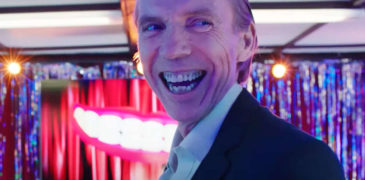
![UFO Sweden (2022) Film Review – A Smart Sci-Fi Thriller From Sweden [Toronto After Dark Film Festival]](https://www.grimoireofhorror.com/wp-content/uploads/2023/10/UFO-Sweden-2022-cover-365x180.jpg)

